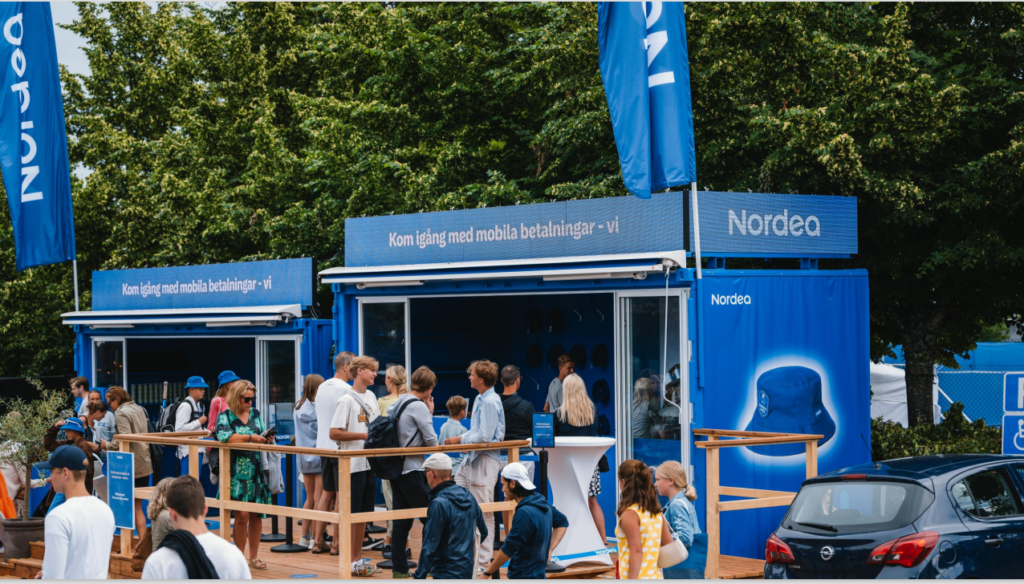After our recent interview with petaFuel, a modern payment provider shaking the contactless payments market up in Germany, we thought it was time to balance things up a bit. What better way than to find out how a 200-year old Nordic universal bank, that handles close to two billion card payments a year, is staying ahead of the curve. We talked to Erik Seifert, Head of Cards & Mobile Payments at Nordea.
Hi Erik, tell us a bit about your role at Nordea.
– I’m heading Nordea’s cards and mobile payments business. That includes all consumer and commercial cards as well as our engagements in the various Nordic Wallets, such as Swish in Sweden.
So, a broad portfolio then?
– Yes, and one in which a lot of things are happening right now, not least from a strategic point of view. The Nordics is rapidly moving away from cash to other solutions and we need to accommodate for it. An important part of that is contactless payments.
How big is the market for contactless payments in the Nordics?
– It’s huge and growing fast. People have discovered the convenience of tap and pay over inserting a card and typing in a PIN, whether it’s using a card, mobile or wearable.
Talking of wearable payments, Nordea was an early adopter when it comes to offering them to customers, how did this come about?
– It’s important to be a part of the conversation – we are interested in technical and commercial trends which is why we initially started with Fidesmo. It’s also a good fit with our strategy, to provide our customers with different payment choices that are convenient, secure and with a design of their choice. Within contactless, we offer traditional plastic cards, Apple Pay, Google Pay and Samsung Pay, and payments with Fitbit, Garmin and Fidesmo, among others.
How does Fidesmo differentiate?
– Fidesmo isn’t tied to a particular device or manufacturer, their platform supports payments from multiple banks, it supports cards from both Visa and Mastercard and various wearable manufacturers. Again, it’s about choice. A wearable can be a bracelet, ring or key fob – whatever meets your personal taste. You connect the wearable to your card of choice on the website when you order it and activate it once you receive it. And because many of the wearables are passive, you don’t need to charge or update them. They just work, which is very convenient. I think I use mine for about 95 % of my card purchases nowadays.
How does this impact “top of wallet”?
– Top of wallet is a bit of a moving target. Historically, it actually meant the card at the top of your physical wallet. Then, a few years ago, we started to see a lot more subscription-based services, like Spotify. The card someone uses to pay with when subscribing to a streaming service becomes top of wallet, as people rarely change the registered card, once subscribed. So issuers put a lot of focus on getting customers to choose their card at subscription. Now we have contactless so if you, like me, use a wearable or a phone for the majority of your payments, whichever card is connected to it is automatically top of wallet.
What has been the market response to wearable payments?
– Initially, we launched wearables as a pilot project internally at the bank. The feedback was overwhelmingly positive and as far as I know, everybody who took part in it is still using a wearable for contactless payments. Since then, we’ve broadened our customer engagement and run several campaigns. In Finland and Sweden, we ran films with a Gandalf-like character paying with a “magic” ring and we also promoted wearables at the international tennis tournament, Nordea Open, in Båstad. We had a good response from both campaigns, so we will continue to promote wearables during the next year. Obviously, it’s the tech-savvy early adopters and trendsetters that get on board first, but contactless payments is a growing market so that is changing.
What about security. How safe are wearables?
– We manage around two billion card payments a year so security is key to everything we do, and it’s important to us that our partners are able to deliver high-security solutions. If we look at cards, security has increased over time. We began with signatures on cards which progressed to chip and PIN numbers. When you connect a payment card to your wearable with Fidesmo Pay, a reference of the card is created, a reference with a different card number, this is called a token. This adds even more protection for our customers. The token on the wearable is tied to that specific wearable and can only be used for in-store payments, which means the token can’t be used for online fraud. And you can block the token connected to your card, without blocking the actual card, so if you lose your wearable, you can still do your evening’s shopping.
Finally, we know you use a wearable. Which one?
– I have a bracelet that is quite durable, so I never have to worry about it not working. I definitely recommend people to give wearables a try.


